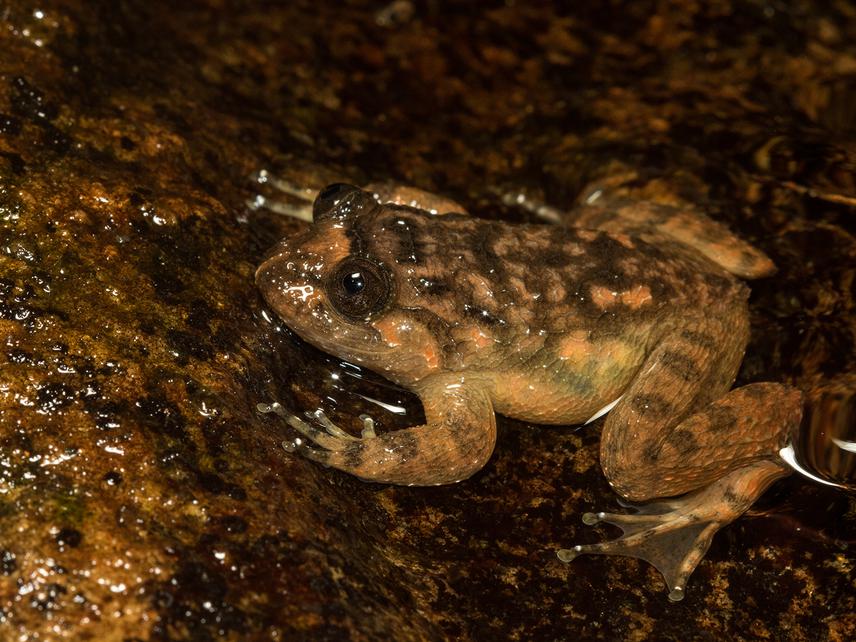Vishnupriya Sankararaman
Other projects
10 Jul 2019
Economic Optimization Models as a Novel Approach to Secure Freshwater Sustainability in the Western Ghats of India
Through this project, I aim to conduct the first large scale community ecology study of stream-dwelling amphibians in the Western Ghats. I will survey head water streams in tea and coffee plantations and the forests of the Anamalai Hills to map species richness and occurrence of amphibians. More importantly, I will analyse what factors control where they can and cannot live and ascertain the effect of various land management practices on these unique and unexplored amphibians. The results of this study will be used to identify streams with greatest conservation potential. Further, I plan to conduct outreach activities with local landowners to communicate the importance of conserving freshwater ecosystems not just for biodiversity but for human needs as well.

Nyctibatrachus.
Amphibians are one of the most endangered animals on earth, dealing with massive population declines due to habitat loss, introduced species, and fungal diseases. Unfortunately, studies show that the global distribution of threats to amphibians strongly overlaps with regions of highest amphibian diversity. The Western Ghats of India is one such region, which hosts both high diversity and highly threatened species. It is one of the eight hottest global biodiversity hotspots with around 250 amphibian species, of which 88% are endemic. Biodiversity in this area is only now being explored with over 50 new species being described in the last four years. Shockingly, not even one of these species has had population assessments or been added to the IUCN Red List. In addition to this biodiversity, the Western Ghats also has the highest human density of any hotspot. The situation is exacerbated with <9% of the region protected under natural reserves and the bulk of the area consists of human-use habitats. Due to these pressures, the landscape has witnessed vast transformations of native habitats and begs the questions: How can human needs be reconciled with biodiversity conservation in the Western Ghats? Is it possible to alter land and water management practices of human-use areas to maximize economic gains while minimizing ecological damage?
To answer these questions, my project will first try to understand the population and community ecology of stream-dwelling amphibians in the Anamalai Hills. The results of the study should determine ecological and anthropogenic drivers of species richness and occupancy across streams and land-management types. The field surveys for this will be conducted in the monsoon season of 2018. Trained observers will walk along streams and record all frogs heard or seen in the water and the adjacent banks. The data I collect will subsequently be analysed in hierarchical Bayesian framework using multi-species occupancy models.
Based on the results of the study, targeted workshops will be conducted amongst local landowners. I will work with all the stakeholders to develop new management strategies to improve riparian habitats without ignoring the economic needs of planters. This inclusive approach should help sustain the conservation initiatives. I strongly believe that the benefits of such action will extend beyond amphibians to all biodiversity and address human needs for a healthy watershed in this region.